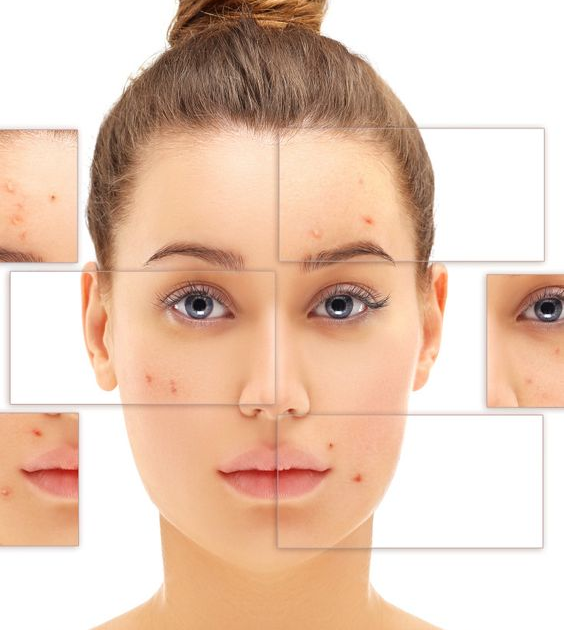Common Side Effects of Pigmentation Treatments and How to Manage Them
- sadaf khan sudozai
- Feb 17
- 4 min read
Pigmentation issues, including dark spots, hyperpigmentation, and melasma, are common skin concerns for many individuals. Fortunately, several pigmentation treatments are available to address these issues effectively, offering significant improvements in skin tone and texture. However, like any medical or cosmetic procedure, pigmentation treatments in Islamabad can come with some potential side effects. Understanding these side effects and knowing how to manage them is crucial to achieving the best results.
In this blog, we will discuss the common side effects of pigmentation treatments and how you can manage them. If you’re considering pigmentation treatments in Islamabad, you can explore a range of options that may work best for your unique needs. You can learn more about these treatments by checking out Pigmentation Treatments in Islamabad for a personalized consultation and treatment plan.

Understanding Pigmentation Treatments
Pigmentation treatments aim to address discoloration caused by factors such as sun exposure, acne scars, hormonal imbalances, and aging. Common treatments include:
Laser Treatments: These use light energy to target and break down excess melanin in the skin.
Chemical Peels: Chemical solutions exfoliate the skin, helping to fade dark spots and uneven pigmentation.
Microneedling: This procedure uses tiny needles to create micro-injuries, stimulating collagen production and reducing pigmentation.
Topical Treatments: Creams and serums with ingredients like hydroquinone, Vitamin C, and niacinamide can be used to lighten dark spots and even skin tone.
While these treatments can be incredibly effective in addressing pigmentation concerns, they may come with some temporary side effects that are important to consider.
Common Side Effects of Pigmentation Treatments
1. Redness and Swelling
One of the most common side effects after pigmentation treatments, particularly laser treatments and chemical peels, is redness and swelling. This happens because the skin is being actively treated and may react to the stimulation.
How to Manage:
Apply a cold compress to the treated area to reduce swelling.
Use gentle, fragrance-free moisturizers to soothe the skin.
Avoid hot showers, saunas, or direct sun exposure for a few days after treatment.
Always follow your dermatologist’s instructions for post-treatment care.
2. Peeling or Flaking
Chemical peels and microneedling treatments can cause peeling or flaking of the skin as the top layers are removed to reveal fresh, new skin. While this is a natural part of the healing process, it can be uncomfortable and may take several days to resolve.
How to Manage:
Avoid picking or scratching the peeling skin, as this can lead to scarring or infection.
Keep the treated area moisturized with a gentle hydrating cream or ointment.
Avoid using harsh exfoliating products during the healing process.
Stay patient – peeling is temporary and will subside once the new skin has regenerated.
3. Hyperpigmentation (Darkening of the Skin)
While pigmentation treatments aim to reduce dark spots, some individuals may experience an initial darkening of the treated area, especially after laser treatments or chemical peels. This condition, known as post-inflammatory hyperpigmentation (PIH), can occur when the skin reacts to treatment by producing excess melanin.
How to Manage:
Be patient, as PIH typically fades on its own over time, usually within a few weeks to months.
Protect your skin with sunscreen daily to prevent further darkening of the treated areas.
Avoid touching or rubbing the treated skin, as this can trigger additional inflammation and worsen PIH.
Consider using gentle skincare products with brightening ingredients like niacinamide and Vitamin C to help speed up the process.
4. Hypopigmentation (Lightening of the Skin)
In some cases, pigmentation treatments, particularly laser treatments, can cause hypopigmentation, which is the lightening of the skin in areas where pigmentation has been treated. This can occur due to over-exfoliation or over-treatment, leading to the removal of too much melanin in the skin.
How to Manage:
This side effect is generally temporary, and the skin should gradually return to its normal color.
Use sunscreen regularly to protect the skin from further damage or lightening.
Consult with your dermatologist if hypopigmentation persists, as there may be additional treatments that can help restore the skin’s natural color.
5. Dryness and Sensitivity
After treatments such as chemical peels or microneedling, the skin may become dry, tight, and sensitive. This occurs because the skin barrier is temporarily disrupted during treatment, which can lead to moisture loss and increased sensitivity to environmental factors.
How to Manage:
Use hydrating and nourishing moisturizers to restore moisture to the skin.
Avoid harsh or drying skincare products, such as alcohol-based toners or exfoliants.
Stick to a gentle skincare routine and avoid any products with strong active ingredients until your skin has fully healed.
Consider applying a hydrating mask to replenish the skin’s moisture levels.
6. Infection Risk
Although rare, there is a slight risk of infection after treatments such as microneedling, chemical peels, or laser therapy. This can occur if the skin is not properly cared for after treatment or if the treatment was not performed in a sterile environment.
How to Manage:
Follow all aftercare instructions given by your dermatologist or aesthetician to reduce the risk of infection.
Keep the treated area clean and avoid touching it with dirty hands.
If you notice any signs of infection, such as increased redness, pus, or pain, contact your healthcare provider immediately.
7. Scarring
In some cases, especially when post-treatment care is not properly followed, scarring may occur. This is more common in individuals with sensitive skin or those who pick at peeling skin after treatment.
How to Manage:
Avoid scratching or picking at the treated area.
Follow a good skincare routine with healing ingredients like aloe vera or hyaluronic acid.
If scarring occurs, consult with your dermatologist for possible treatments like topical silicone gel or laser scar removal.
Conclusion
While pigmentation treatments in Islamabad are highly effective in improving skin tone and texture, it’s important to be aware of the common side effects that may arise. Most of these side effects are temporary and can be managed with proper aftercare and patience. If you’re considering undergoing pigmentation treatment, consult with a qualified dermatologist to determine the best course of action for your skin.
At Dynamic Clinic, we offer personalized pigmentation treatments designed to address your unique concerns. Our experienced team is dedicated to providing you with the best possible results while minimizing potential side effects. To learn more about pigmentation treatments or to book a consultation, visit Dynamic Clinic, where we can guide you on your journey to clearer, more even-toned skin!





Comments